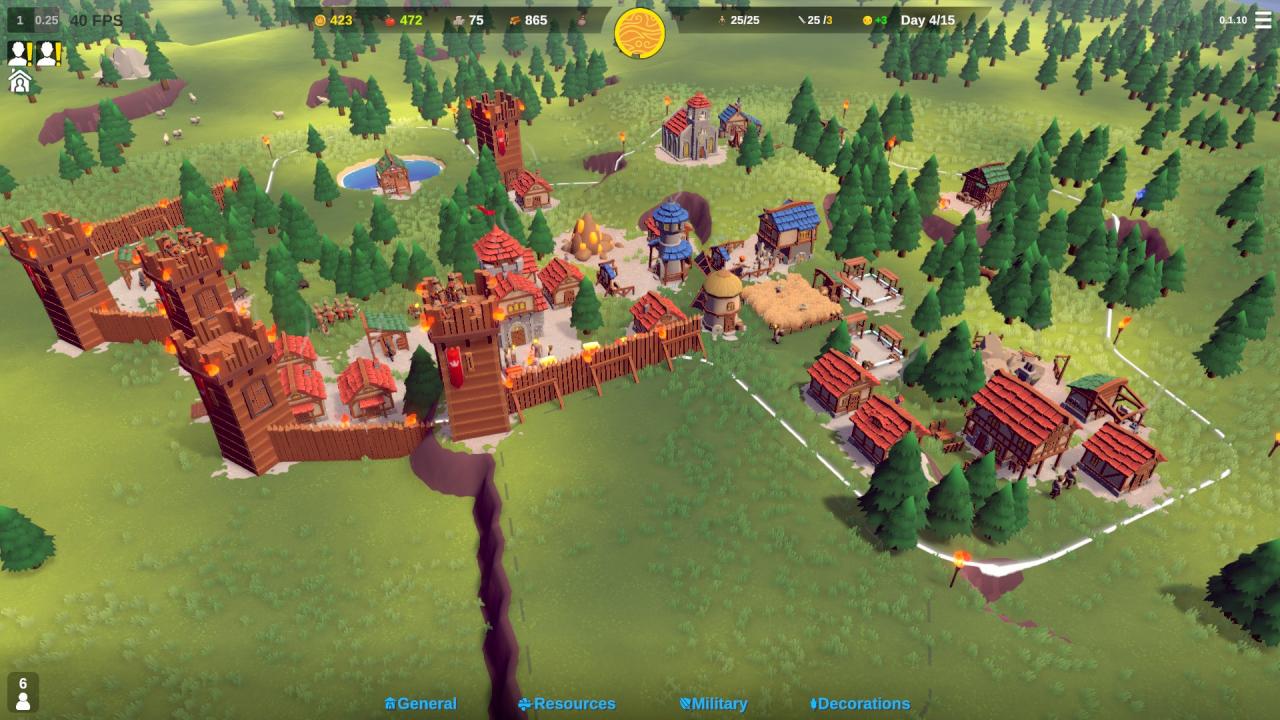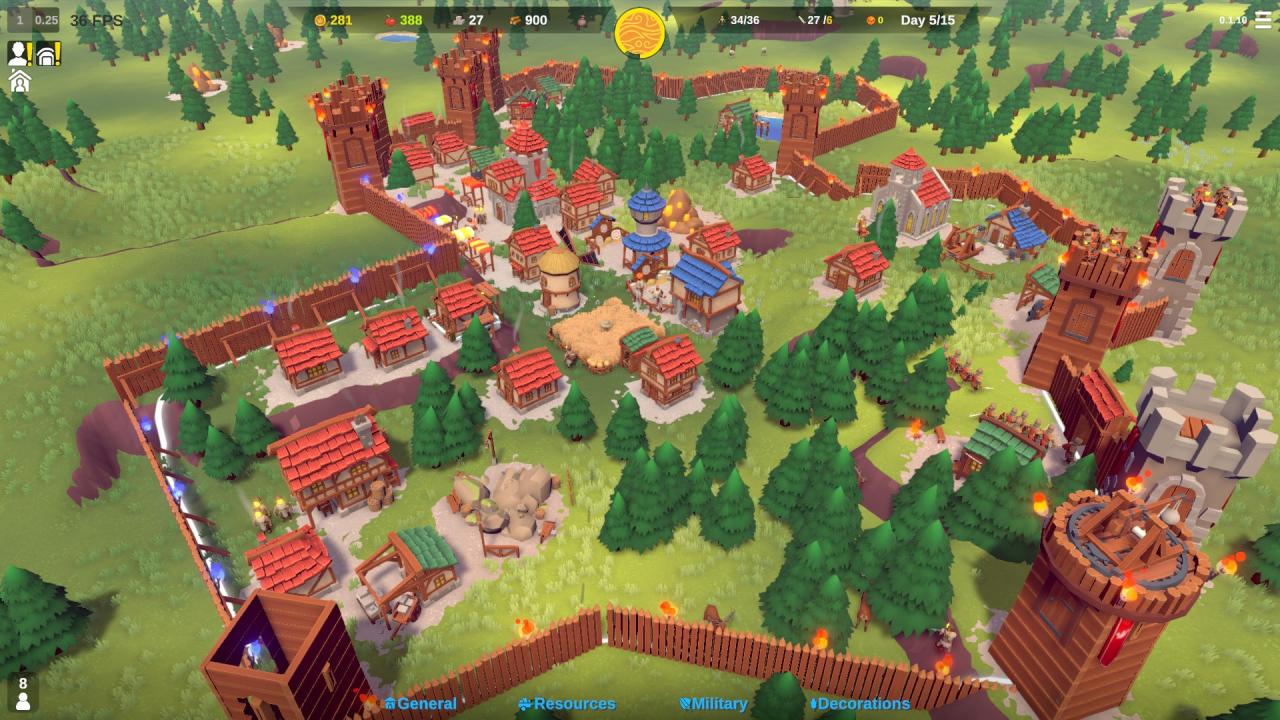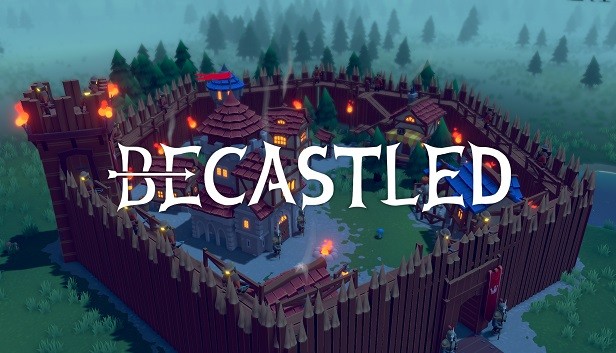For Becastled players, this is a short guide for surviving the first nights of the hardest difficulty settings and building a foundation for long term suvival.
Intro and what to expect
Now I know Becastled is a charming, relaxing base builder game. One which is nice to figure out for yourself. But once you start challenging yourself at the higher difficulties, it only becomes more exciting and the difficulty levels are done quite well. This guide aims to help you get settled at difficulty levels King (7) and Divinity (8) although I only managed to survive Divinity once through the help of RNGesus. Don’t expect to have perfect nights like you did on recruit difficulty either. You will lose most if not all of your armies constantly and parts of your town will get destroyed. Luckily if you stay calm, this game allows you to recover from setbacks more than any other game.
I will first talk about a few principles you need to understand to grow your town quickly and defend against overwhelming odds. After that I will walk through the first 3 days and nights because the start of the game is particularly challenging at this difficulty. This guide assumes you have learned the basics of this game in your first playthrough.
Core mechanics to understand
Every citizen you have consumes 10 food a minute and 1 happiness. Every farmer/hunter/fisherman produces 40 every minute and every tavernkeeper produces 4 happiness. This means that roughly for every 4 citizens you have 2 people providing the basic needs of your citizens and 2 people who are free to do other things. Your army does not count as citizens and only consumes sunstone.This means that if you want a big workforce of sunstone miners, stone miners, vendors and lumberjacks you are going to need a lot of people to sustain them. That means a big castle with a big army needs a big population which is why growing quickly is essential to surviving the ever increasing waves of enemies.
Population growth
The way your number of citizens increases is simple. Your HQ constantly grows new citizens as long as there’s housing space available. The speed at which this happens scales with happiness. Every moment your HQ is not growing citizens is essentially lost time so make sure you build either a lot of houses or are recruiting an army. Your army takes away your population after all. Having your HQ do nothing for a long time because of lack of housing will cost you a lot of progress so be aware of that. When you increase your sunstone production by a lot, you’ll want a lot of excess happiness to quickly replenish the population that is turned into soldiers.
Obviously you are also limited by the amount of wood available which is why you’ll want to build two sawmills at the start of your first day and another at the start of the second day.
Markets are powerful
A vendor at the market consumes one luxury item (created by working a food tile) and produces a base of 70 sunstone and 1 happiness. This is most easily compared to the sunstone miners who produce 100 sunstone. The catch with the markets is that the vendors get a 10% production bonus for every other stall within the catchment area of the market. Which means at 11 stalls (don’t have to be worked) they get a 100% production bonus for 140 sunstone and 2 happiness. That’s a full 40 sunstone and 2 happiness more than the sunstone miners.
Even in the early game I prefer the vendors to the sunstone miners for increasing my sunstone production. Building 4 stalls costs only 400 wood (the sunstone mine by itself costs 300 wood and you need to purchase the tile) and once you put 3 vendors to work there they aready produce 270 sunstone and 3.9 happiness. This tends to be an earlier and more effective source of sunstone IF you grow your little town quick enough.
Funneling the enemy
Your enemies will pick the shortest route to your base to attack, usually preferring to path to the archers that are shooting at them. Use this to your advantage by opening the gates and your enemies will try to funnel through a small door. Swordsmen are very sturdy and are excellent at fighting in the doorway, even if there are few of them. Just position them right behind the door and your achers and siege equipment will have plenty of time to shoot the invaders.
The first day
The first priorities are wood and housing space and that’s how the starting build order will look like:Sawmill -> house -> sawmill -> house -> house -> house -> food production -> market stall
The result should look something like this:
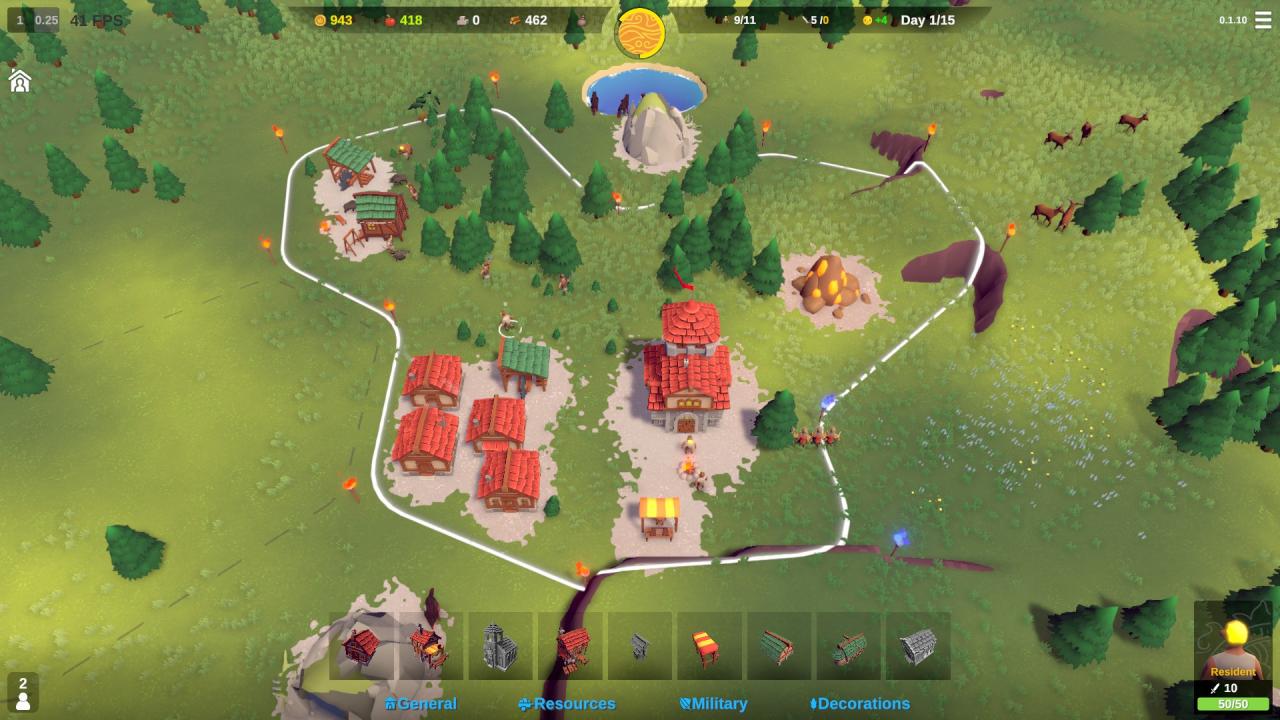
Make sure that with the first tiles you purchase you catch both a food resource or two and plenty of trees for your sawmills to work. Spread out your sawmills to prevent them having to walk to the edges of your territory at the second half of the day. After these buildings want to build another house and then an archery range. You’ll want roughly six archers to defend yourself in the first night, although if the enemy attacks through wolves you might not need them. After the archery range you want to build another food production site, a second market stall and finally a wooden tower in the direction of the attack to help out your achers. If you have the food you can build another house and hopefully you can end the day with 13 citizens and 6 archers.
The second day
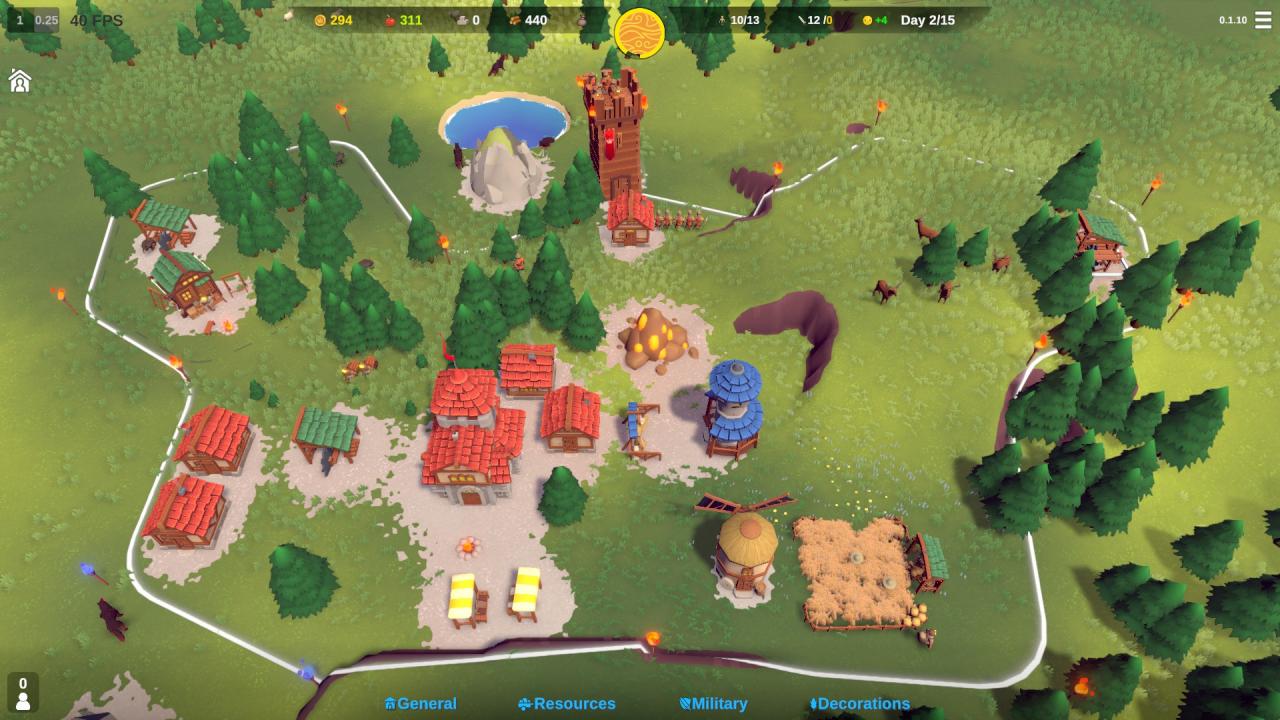
The goal of the second day is once again to welcome 8-10 new citizens, build a barracks and start stone production. But first, it is time to build a third sawmill. Wood is really the main limiting factor to both your expansion and defense so having 6 woodcutters is not a luxury. At the end of the day if their paths become too long you can unemploy them again to start training into swordsmen.Along with the third sawmill, new houses remain a priority and you also need a tavern, new food source and some market stalls to keep up the growth. Having 4 market stalls with 3 vendors should earn you 270 gold a minute and the tavern is essential for both growing your population and recruiting your army. At the end of the day you can start production of two towers in the direction of the attack with 3 fences surrounding them and a gate between the towers. Hopefully you will have around 10 swordsmen protecting the opened gate during the night and at least 10 archers shooting from the towers. At the end of the day you also want to build a stonecutter because you’re going to need it tomorrow. The aim is 19-21 citizens and 20 military at the end of the day.
The third day
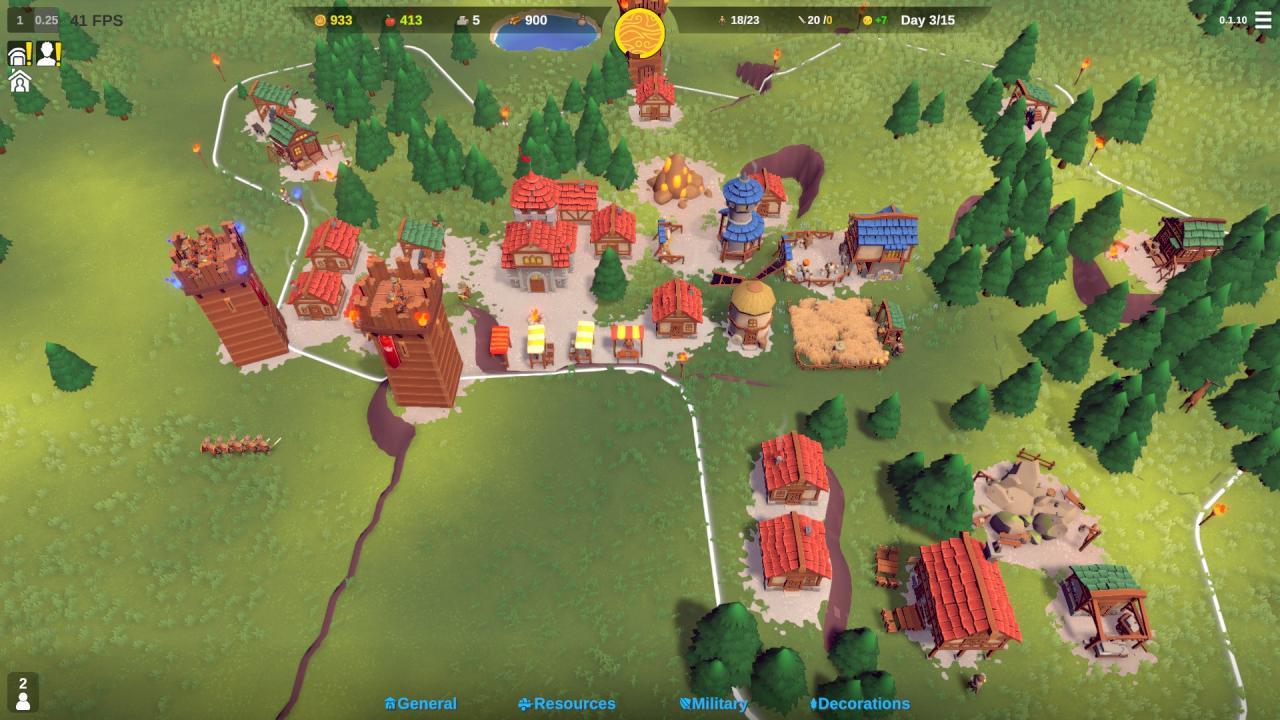
Luckily for you, you are about to construct the most OP building in the game – the Church. This is why we wanted the stonecutter at the end of day 2, you need 20 stone (1 minute of stone production) to build the church and then you immediately want to staff it with 2 citizens to revive the dead soldiers. Having a full day of wood production means we can build a lot more stuff, including a sunstone quarry, a siege workshop and some more walls and towers. You can maintain a melee army of around 12 for the next few days to hold the gates and from now on your trebuchets will do most of the heavy lifting.You don’t need to grow quite as fast anymore as in the early days but don’t completely let it slouch either. You probably won’t be able to wall off your entire base on day 3, that’s a job for day 4 and 5. Just continue growing your production capabilities and from here on the fights will become easier.
